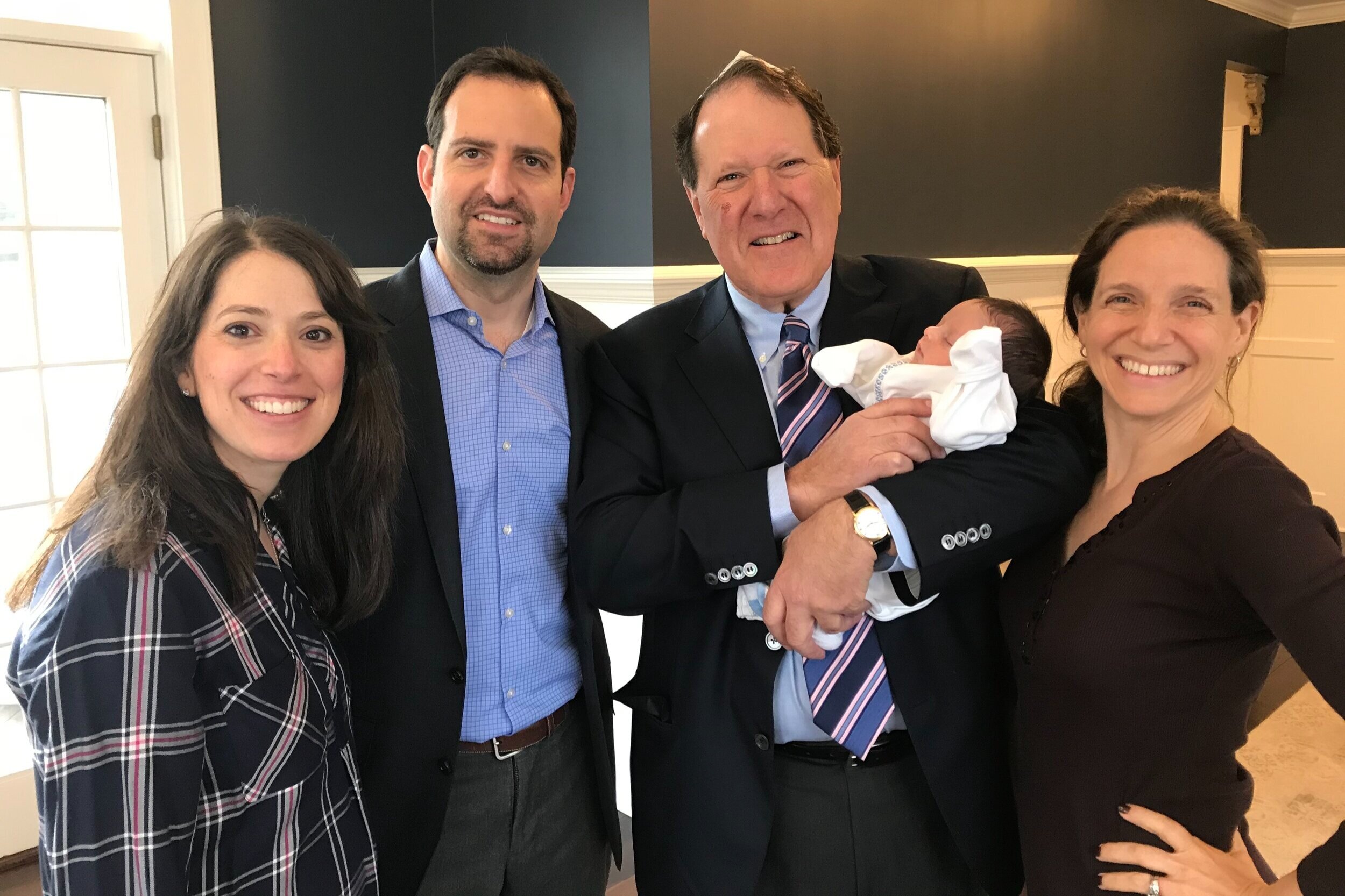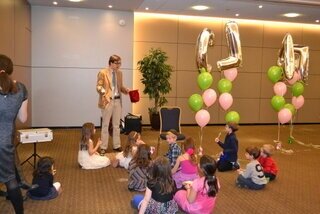



Bris/Baby Namings
Sutton Place Synagogue has become the go to place in Midtown Manhattan for a brit milah (bris) and baby namings. Our Sanctuary and Ballroom give you the perfect canvas to introduce the newest addition to the family. We work with various mohels throughout the tri-state area for Brit Milah. We work directly with families to plan meaningful Baby namings. The namings can be during shabbat services or we can work with your family to create a meaningful, at home ritual. Please reach out to Rabbi Ain at rabbiain@spsnyc.org.
Rabbi Rachel Ain’s explanation on the meaning of the bris
The Power of Jewish Rituals as a Mark of the Covenant
By Rabbi Rachel Ain, November 2008
Originally posted at syracuse.com
Why do I wear a kippah? I was asked this question when speaking at Corcoran High School this week, giving a talk to a 10th-grade English class about the history, traditions, and principals of Judaism. I answered that it reminds me of two things: first, that I am connected to the Jewish people, and also, that there is something above me, God.
That doesn’t necessarily mean that I ascribe to the position that God looks like an old man in the sky, but it does mean that there is a force, I would call it God, in this world that I am in partnership with to try to live a life committed to the sanctity of all life and particularly our Jewish traditions.
This led to the second question by the students. They began to ask about what a bar mitzvah is. Many of them had heard about it even if none of them had ever been to one. This question made me realize that during my lecture to the class, I left out a key part of Jewish life, and that is the lifecycle and how we mark it. And so, I began to chart on the blackboard key moments in a Jewish person’s life.
I began with the obvious. The brit milah, the ritual circumcision that takes place at 8 days old. I explained that we do this because of the commandment and the fulfillment of the commandments that we see in this week’s parasha, parashat vayera in the book of Genesis.
God commands Abraham, and Abraham follows the command, to circumcise his son Isaac at 8 days, in order to bring him into the covenant. We learned in last week’s parasha that God said to Abraham that every male among you shall be circumcised and that shall be the sign of the covenant between Me and you. And throughout the generations, every male among you shall be circumcised at the age of eight days. And so, as we reach this parasha, where we witness Isaac’s birth, we are told that Abraham fulfilled the commandment by circumcising Isaac.
What an amazing ritual that we have. As many of you know, in traditional circles, if you are born to a Jewish mother, or you go through a conversion, you are considered Jewish. In general there is no litmus test for entry into Jewish life. But why, what is the force of this ritual, and any other lifecycle event? What are we demonstrating when we engage in marking our life, Jewishly?
I would argue that Jewish ritual, especially lifecycle events, acknowledge that as we move through life, we can have an awareness of God and a connection to our tradition.
What do I mean-first, we must acknowledge that circumcising our child, outside of the hospital, on the 8th day, seems a bit strange, and yet, it is something that we hold onto. Rabbi Ismar Schorsch says that we do this because: Circumcision is an act of submission to a higher ideal than mere survival, an act of self-discipline and instinct renunciation. What an interesting comment.
By circumcising our sons, especially in the context of Jewish ritual and law, we are acting with a sense of consciousness and at the same time, letting go of what our protective human instincts would tell us to do. We are pausing, and allowing God and the Jewish tradition to be a part of our decision making process as we begin to raise our children.
Rabbi Brad Artson adds to this understanding as well. He says that: Brit Milah also highlights what is eternal about Jews: The link between the generations that spans the ages. Just as those before us underwent this mysterious and imposing rite, so too do we. Just as parents and children wish for each other a life free from pain, so we also remind ourselves that some things are worth suffering for-first and foremost our sacred bond with God and our people.
This uncomfortable rite is indispensable; it reminds us of our sacred mission on God’s behalf. Awe, fear, majesty, piety, sorry, and joy-the range of feelings that brit milah engenders are the sure signs that brit milah brings us face to face with God.
I would argue, that this act is also about our partnership with God. We read in Genesis Rabbah (a collection of Rabbinic writings) that: A pagan philosopher once asked Rabbi Hoshai, “if circumcision is so dear to God, why was Adam not created with the mark of circumcision?” The Rabbi Replies: You see, everything that was created by God during the six days of creation needs finishing: mustard needs sweetening, wheat needs grinding, and even people need finishing.”
Okay, so we begin our relationship with God by finishing God’s creations. But is that all it is about. I would say no. It is also about keeping the covenant alive and dynamic.
Debra Nussbaum Cohen, in a book on ceremonies to welcome Jewish girls’ births, says that “We received the covenant, but we also accepted it. The covenant is God’s promise to us, yet it requires our active participation in the practices that are integral to Jewish life. We are partners with God in every aspect of daily existence, the great and the commonplace. The active acceptance of our side of this partnership helps to elevate what is mundane to the realm of the holy.”
And so, how do we do that? How do we elevate the mundane? First, in reflecting on how to welcome our Jewish girls into the covenant, because we want to elevate their birth as well,
Cohen says: “If we want our own children to love the fact that they are Jews, it is something we must establish inside of them from their very first moments, along with self confidence and a sense of security and worth. It is something that we can begin establishing for them in the way we welcome their arrival. Circumcision is clearly a dedicatory act. And that is what we are now creating for our daughters-a way to express our dedication to raising them, joyfully, as members of the Jewish people.”
You can see that our Jewish lifecycle really does help us begin to think about our relationship with God and our place in the chian of the Jewish people.
But, we don’t end at 8 days. We know that when our children turn 13 they too enter into a covenant of their own. Yes, they are Jews, but they are able to publicly reaffirm their commitment to their Judaism by coming to the torah and reciting the blessing, the aliyah, which affirms that that they are part of a community chosen by God, to study God’s torah. The bar and bat mitzvah experience certainly can be overdone, I know that. I remember clearly that when my mom was arranging the party for my bat mitzvah, the florist asked her, what my theme was-she replied quickly-bat mitzvah, that is the theme. The florist immediately understood what my mom meant-that this wasn’t about the latest fads, but about a commitment to tradition, a place in our community, and an acknowledgement of God’s presence.
When I was speaking with the kids at Corcoran, I tried to explain to them that the bar and bat mitzvah could be seen as parallel to their confirmation, expect that our kids are Jewish whether they have the service or not.
But even though that is true, I hope that all of our kids will take the time, make the effort, and take pride in this lifecycle moment, because just as it goes against the instincts of parents to cut their child, 8 days after birth, and it might go against the instincts of a 13 year old to spend many hours a week, many months a year preparing for today, it is done b/c it is a way of connecting. It is a way of saying that there is something else out there. It is the community’s way of wearing a kippah.

